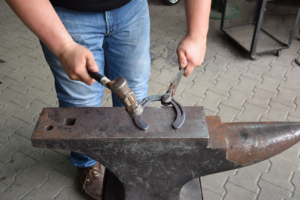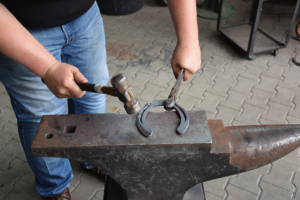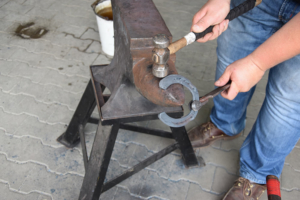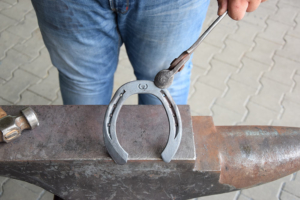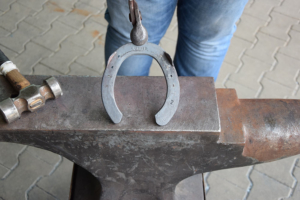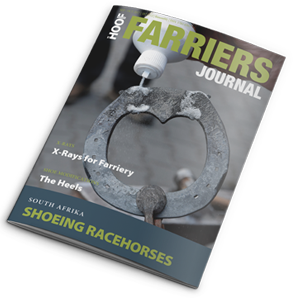
Is there a possibility to reduce lever forces while using a lateral extension?
Farrier instructor Christoph Schweppe shows one of his favourite hind shoe modifications:
Shoe Modifications – The Heels
The ability to modify keg shoes efficiently is a skill that makes the farrier’s daily work easier. It helps us to avoid overloading our shoeing vehicles with too many different pre-made patterns and enables us to adapt every shoe individually to different horses’ needs. Farriery instructor Christoph Schweppe shows us three different ways of modifying heels and explains for which case he uses which modification.
Lateral Extension on hoof surface
This modification increases the surface area on the hoof side of the shoe while shifting the ground-side lever arms that influence the coffin joint medially. As the ground surface is now divided into two differently angled areas, its penetration into soft ground is similar to that of a non-widened branch. In this way, the increase in pressure that we often see on wide lateral heels due to limited penetration on soft ground does not occur. Horses with lateral rotation of a lower limb beginning at the hock can benefit from this modification. It lets you give the often overloaded lateral heel more surface area to stand and develop on, while reducing the pressure on this side by moving the lever arms on the ground surface of the shoe more medially. On hard ground, horses benefit from reduced pressure as the most peripheral ground contact point of the widened heel is less lateral than in a normal shoe. The branch moves away from the working area as it also undergoes changes (it becomes rounder/more accentuated inward bend). Straightening the branch before starting the modification helps.
